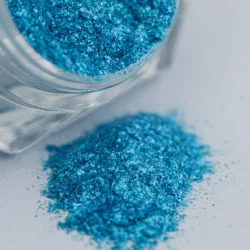Here are some common types and uses of transparency pigments
2024-01-10
Transparency pigments, also known as transparent pigments or translucent pigments, are colorants that impart color to a material while allowing light to pass through. These pigments are often used in various applications where a translucent or transparent appearance is desired. Unlike opaque pigments that block light, transparency pigments add color without completely obscuring the underlying substrate. Here are some common types and uses of transparency pigments:
1. Dyes:
- Dyes are highly transparent colorants that are soluble in the medium they are applied to, such as water, solvents, or polymers. They are commonly used in the coloring of textiles, inks, and some plastics.
2. Stains:
- Stains are transparency pigments used to color wood, concrete, and other porous materials. They penetrate the substrate, enhancing its color while allowing the natural texture and grain to remain visible.
3. Inks:
- Transparent pigments are widely used in the formulation of inks, especially in the printing industry. They provide vibrant color without obscuring the printed text or image.
4. Watercolor Paints:
- Watercolor paints often utilize transparent pigments, allowing artists to create layers and achieve a luminous effect on paper. These pigments are known for their ability to mix and blend easily.
5. Tints in Plastics:
- Transparent pigments are used to tint plastics, creating colored plastics with a see-through or semi-transparent quality. This is common in applications like packaging and consumer goods.
6. Glass Coloring:
- Transparent pigments or colorants are used in the coloring of glass to achieve different hues without compromising the material's transparency. This is seen in stained glass windows, glass art, and decorative glassware.
7. Cosmetics:
- Transparency pigments are utilized in the formulation of cosmetics, such as lipsticks, nail polishes, and eyeshadows. They provide color without completely covering the skin or nails.
8. Ceramic Glazes:
- In ceramics, transparent pigments can be used in the formulation of glazes to add color to pottery or tiles while allowing the underlying texture and details to show through.
9. Resin Art:
- Artists working with resin often use transparent pigments to add vibrant colors to their creations while maintaining the resin's translucency. This is commonly seen in epoxy resin art and crafts.
10. Printing Inks for Packaging:
- Transparent pigments are utilized in printing inks for packaging materials, allowing for the printing of colorful designs on transparent or semi-transparent substrates.
It's important to note that the term "transparent pigment" can refer to both organic and inorganic colorants depending on the application. The choice of transparency pigments depends on factors such as the desired color, application method, compatibility with the medium, and the degree of transparency required.



